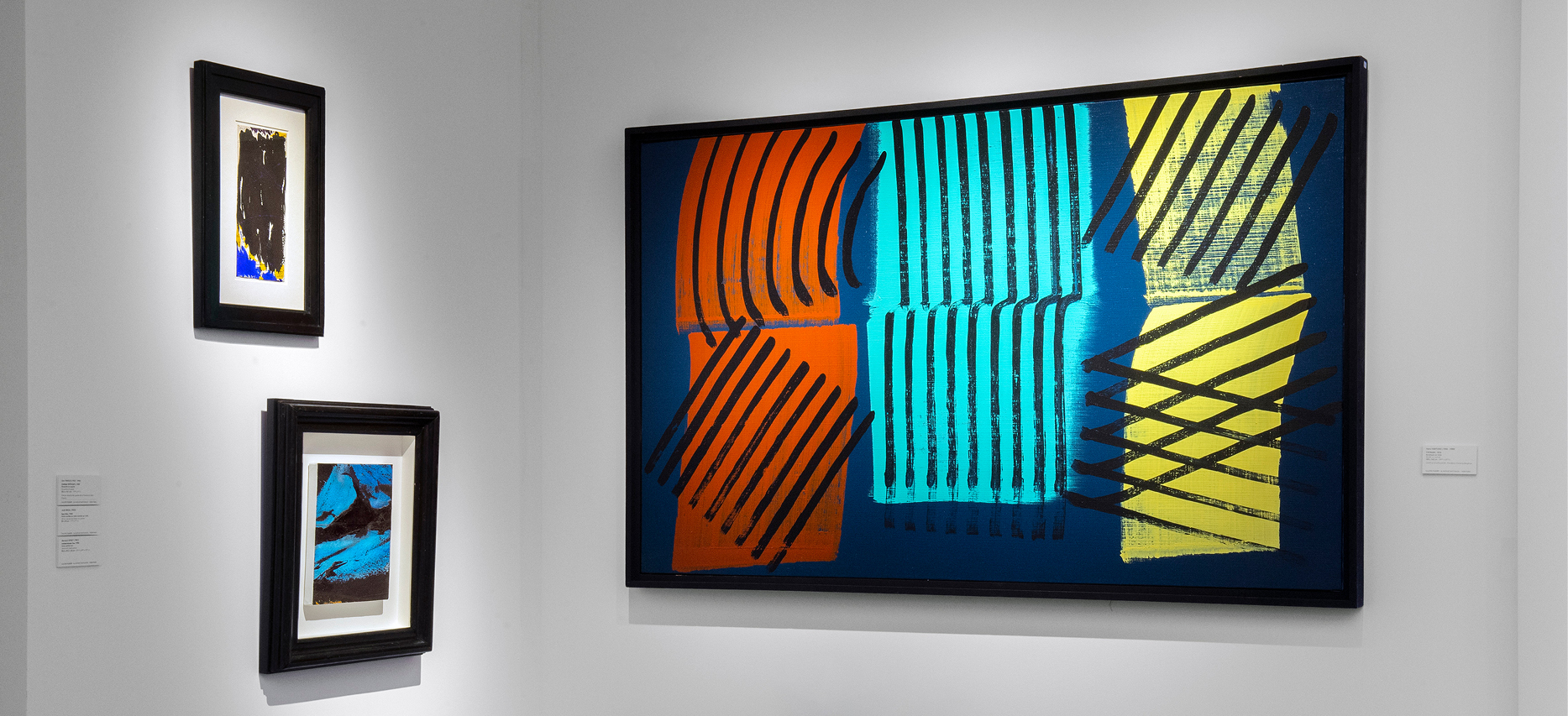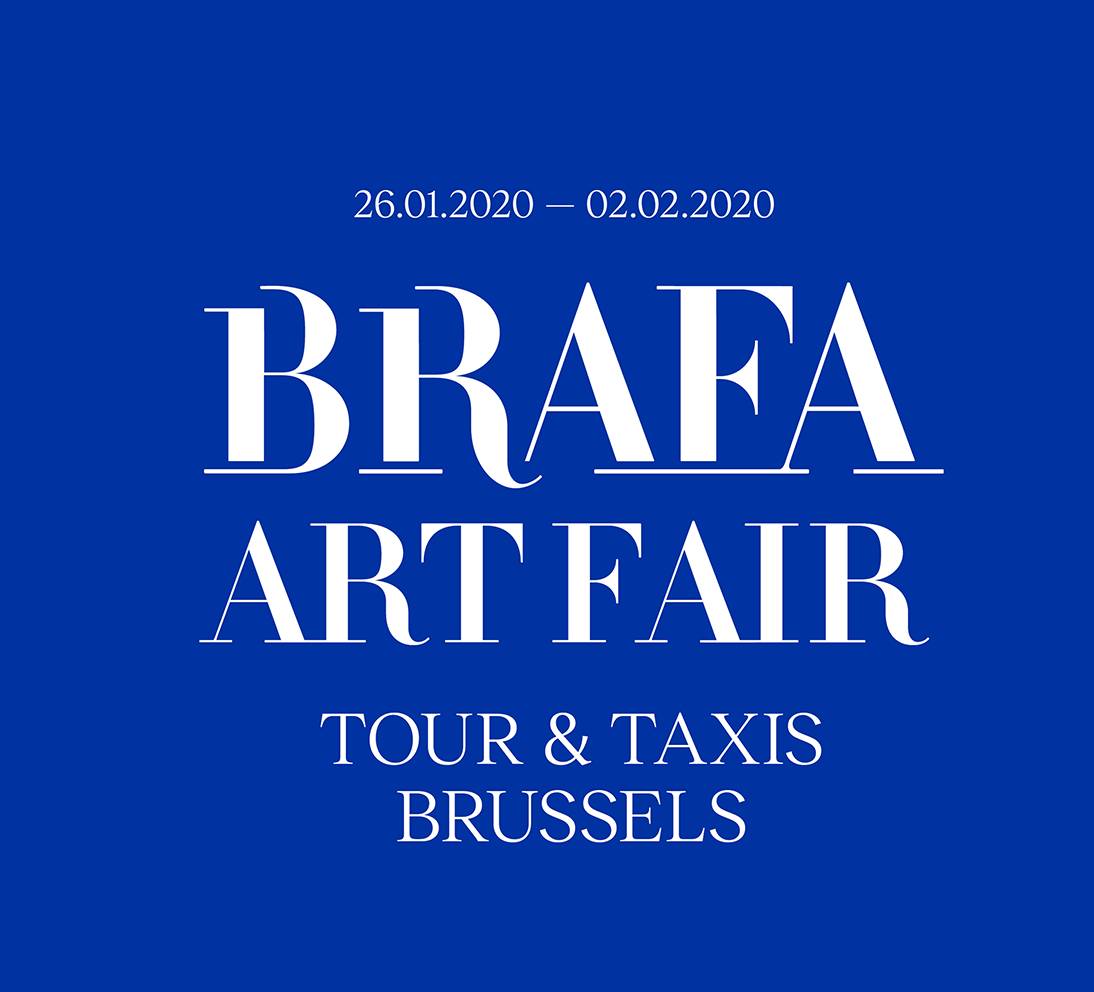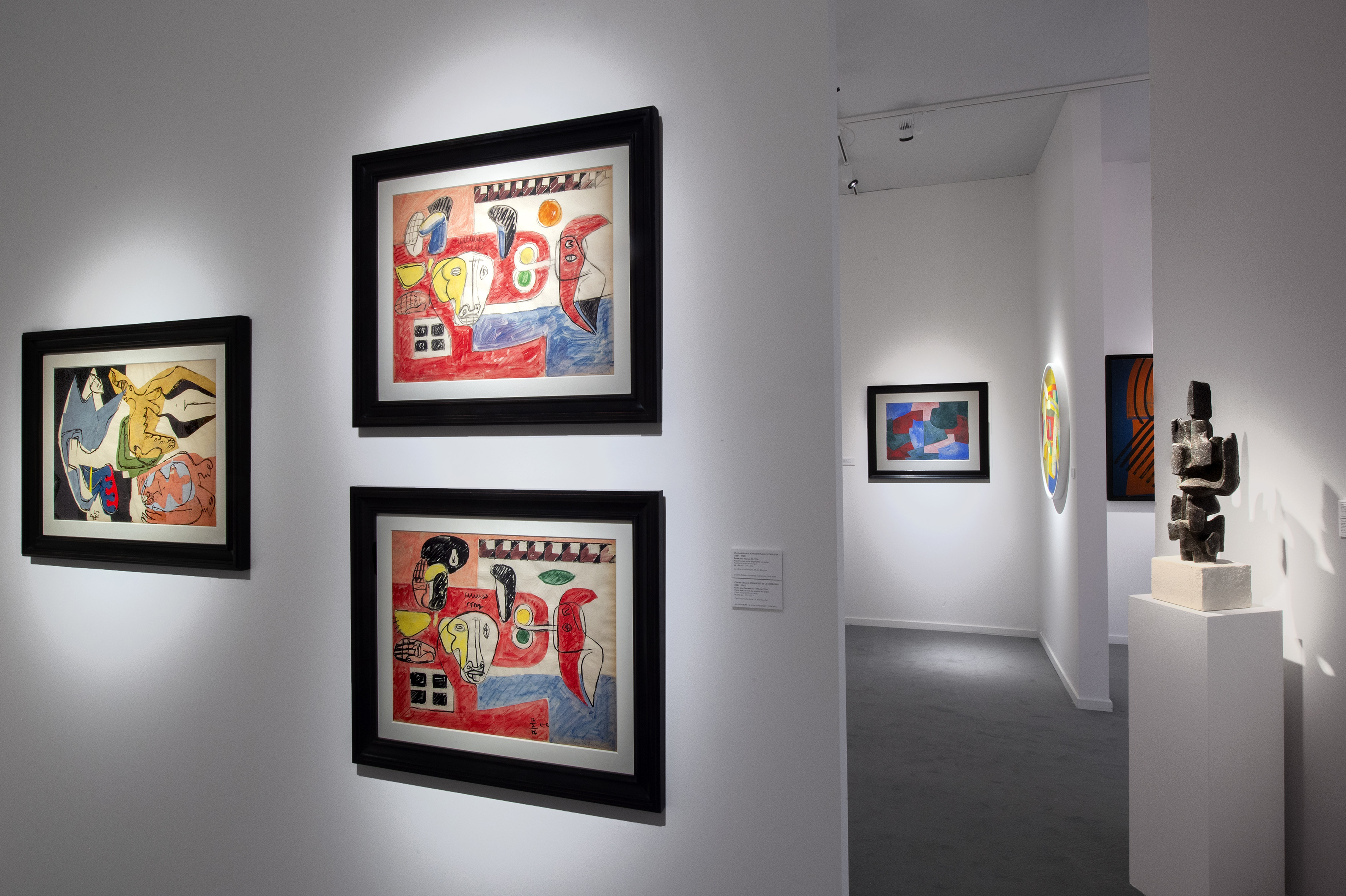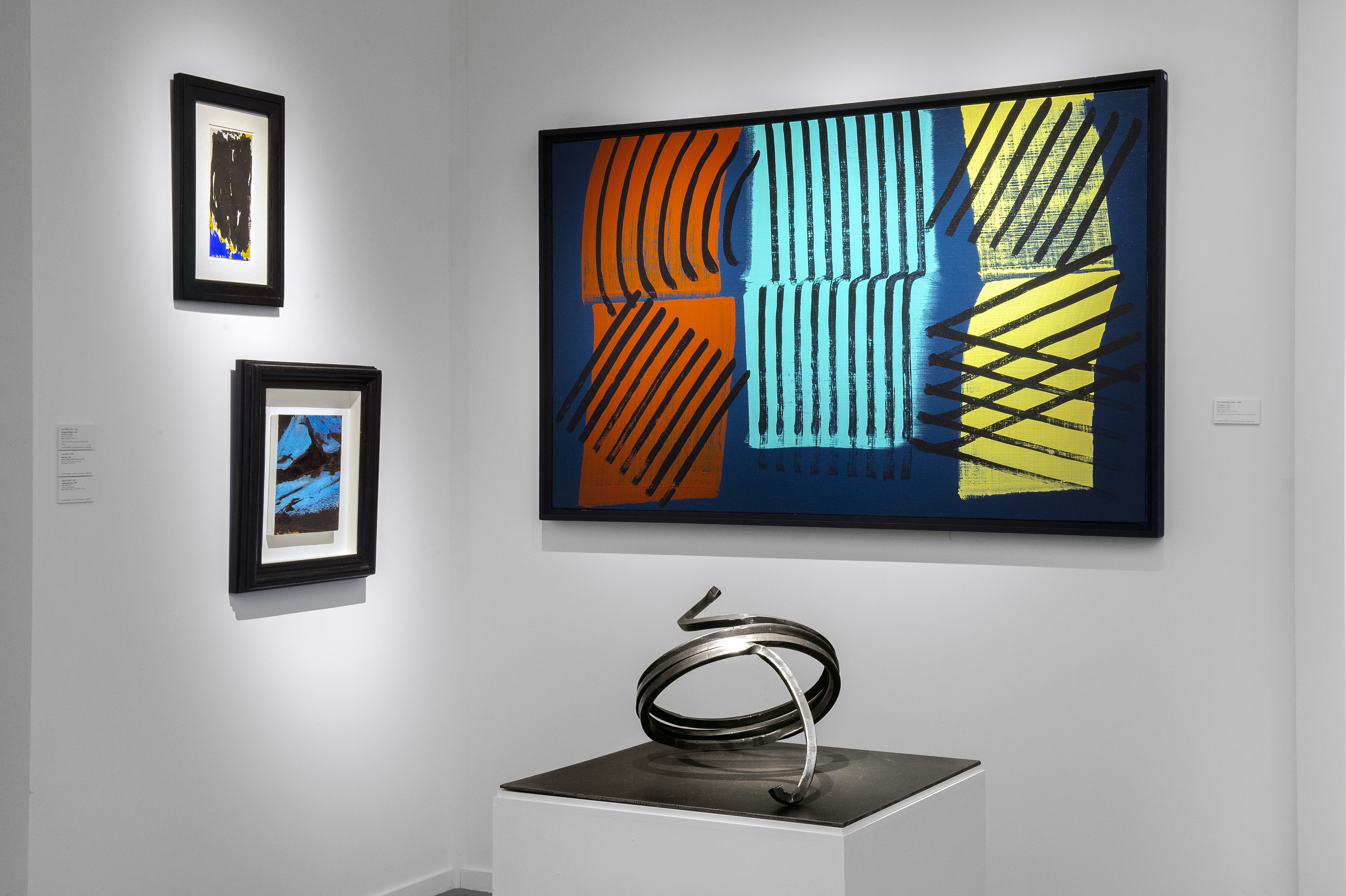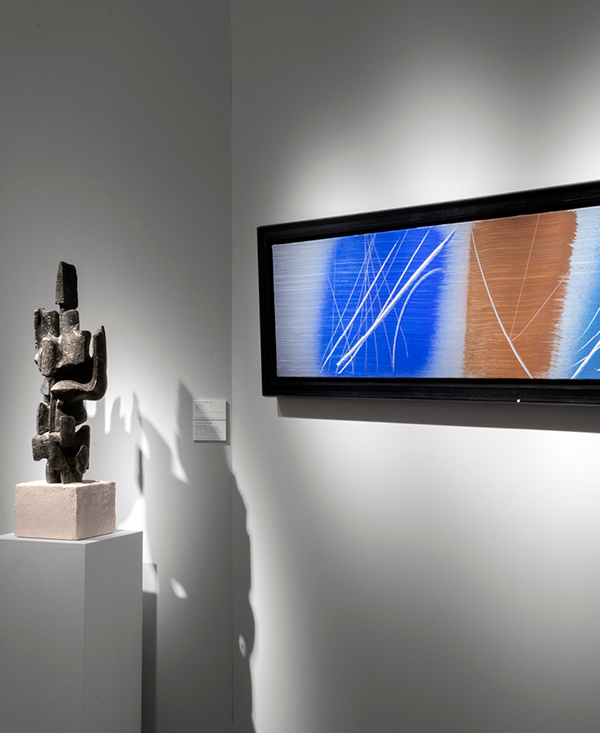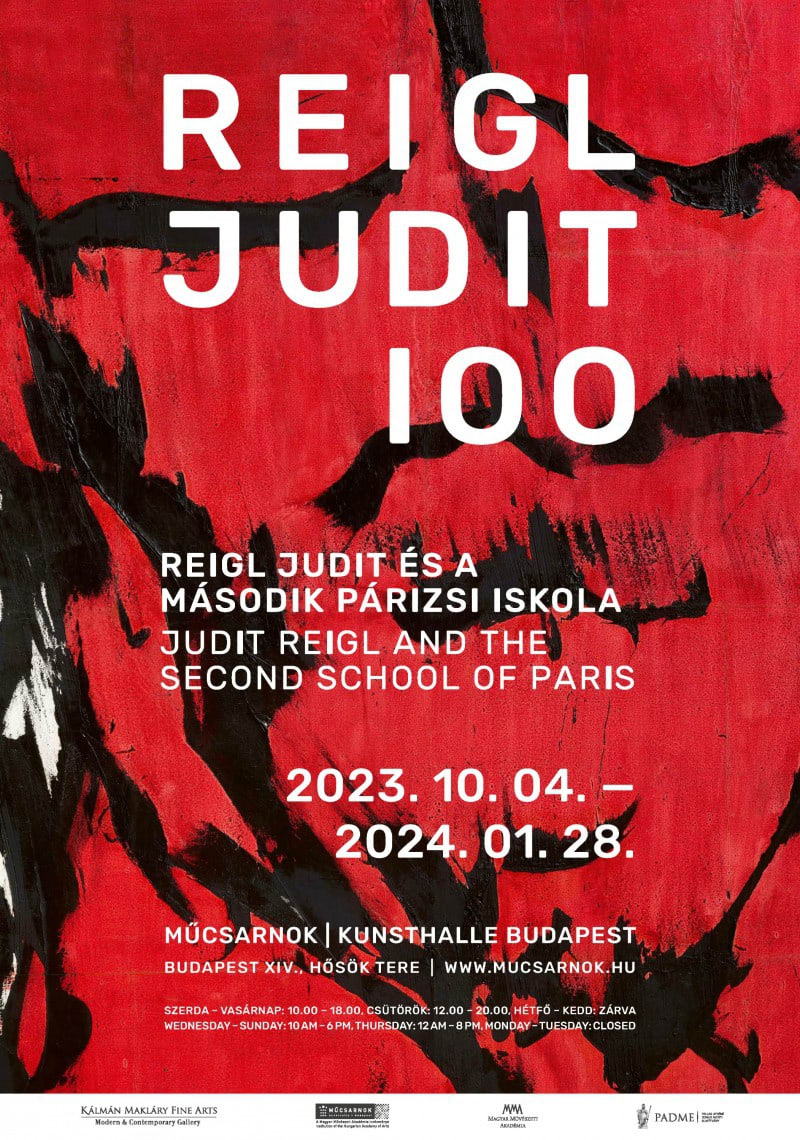For its twelfth participation in BRAFA, the Galerie A&R Fleury unveils a collection of twentieth-century paintings, sculptures and works on paper, carefully selected for the event.
A first space is devoted to post-war art and brings together works by Karel Appel, Sam Francis, Hans Hartung, Alicia Penalba, Serge Poliakoff, Jean-Paul Riopelle and Maria Helena Vieira Da Silva. The visitor is greeted by Optez pour l’esprit, acrylic on kraft paper laid on canvas, created by Pierre Alechinsky in 1966. Drawing inspiration from the Nordic stories, the artist plunges us into a truly anguishing “extraordinary” world where the spectator is invited to a kind of disheveled celebration of shapes and colours. Hans Hartung, who had a major retrospective at the Musée d’Art Moderne in Paris in 2019, is present through a collection of works from the 1940s to the 1980s, including an exceptional oil on canvas, T1952-34, from 1952, whose spontaneous gesture foreshadows lyrical abstraction.
A second space reveals the great names of modern art, such as Paul Delvaux, Fernand Léger, Le Corbusier, Max Ernst, Albert Gleizes, Auguste Herbin and Léopold Survage. The gallery, specialised in the work of Ossip Zadkine, exhibits an exceptional
Oiseau, acquired in the 1920s by a collector on the advice of Foujjta, and kept in the family until now. Although Zadkine is associated with Cubism, this polished and patinated curved copper piece is part of a different register, translating the influences of Brancusi and Giacometti by the treatment and association of materials.
Two very beautiful preparatory studies on paper by Le Corbusier for Taureau XII, from 1956, bear witness to the final preparatory phases of this painting, which takes up one of the themes dear to the artist. These two pastels washes on graphite lines on paper find an echo in L’acrobate et l’écuyère, executed in 1953 by Fernand Léger. Bright and on a yellow background, this gouache and India ink on paper is itself a preparatory study for La Grande Parade, held at the Guggenheim Museum in New York. Paul Delvaux features our space devoted to modern art with a seductive work on paper, Les deux amies from 1967, composed of a production of naked female figures with an implicit narrative of desire and eroticism.

